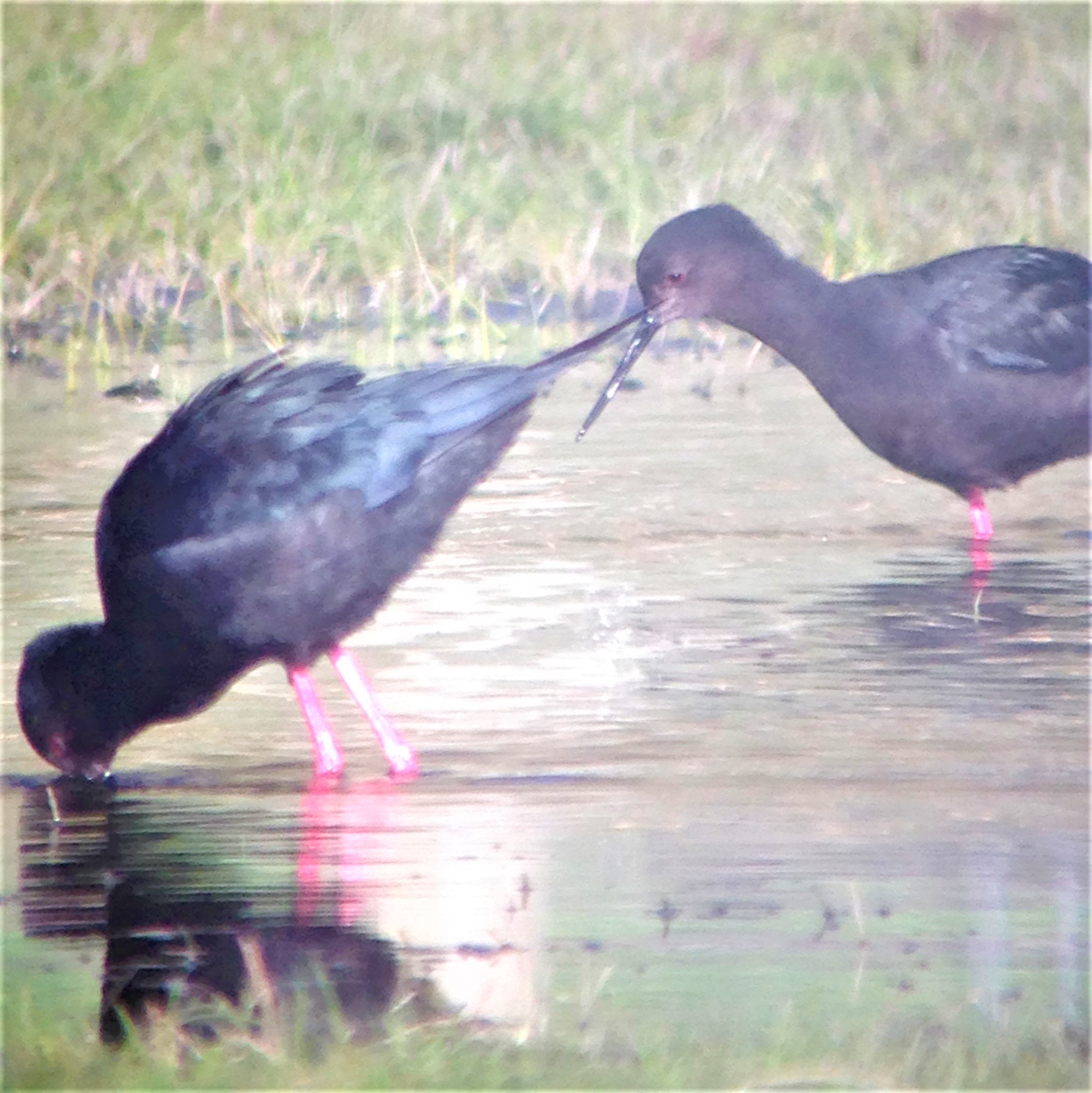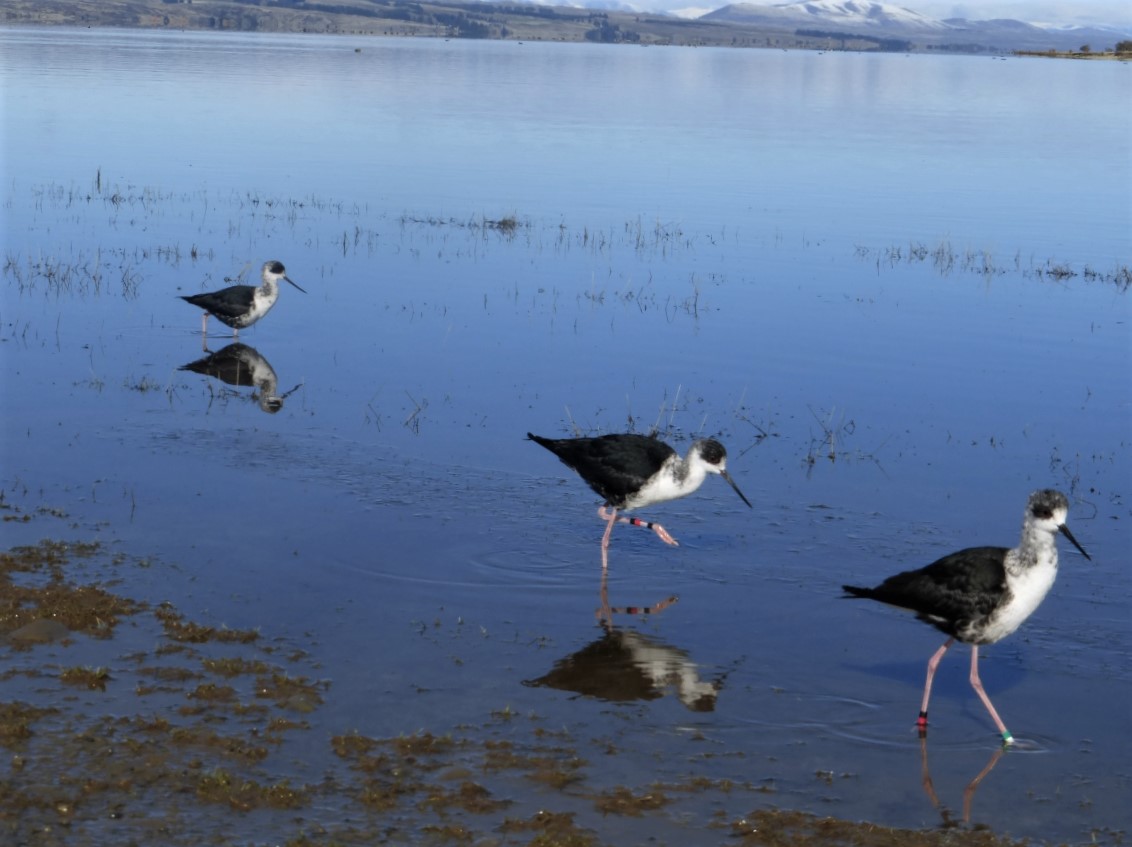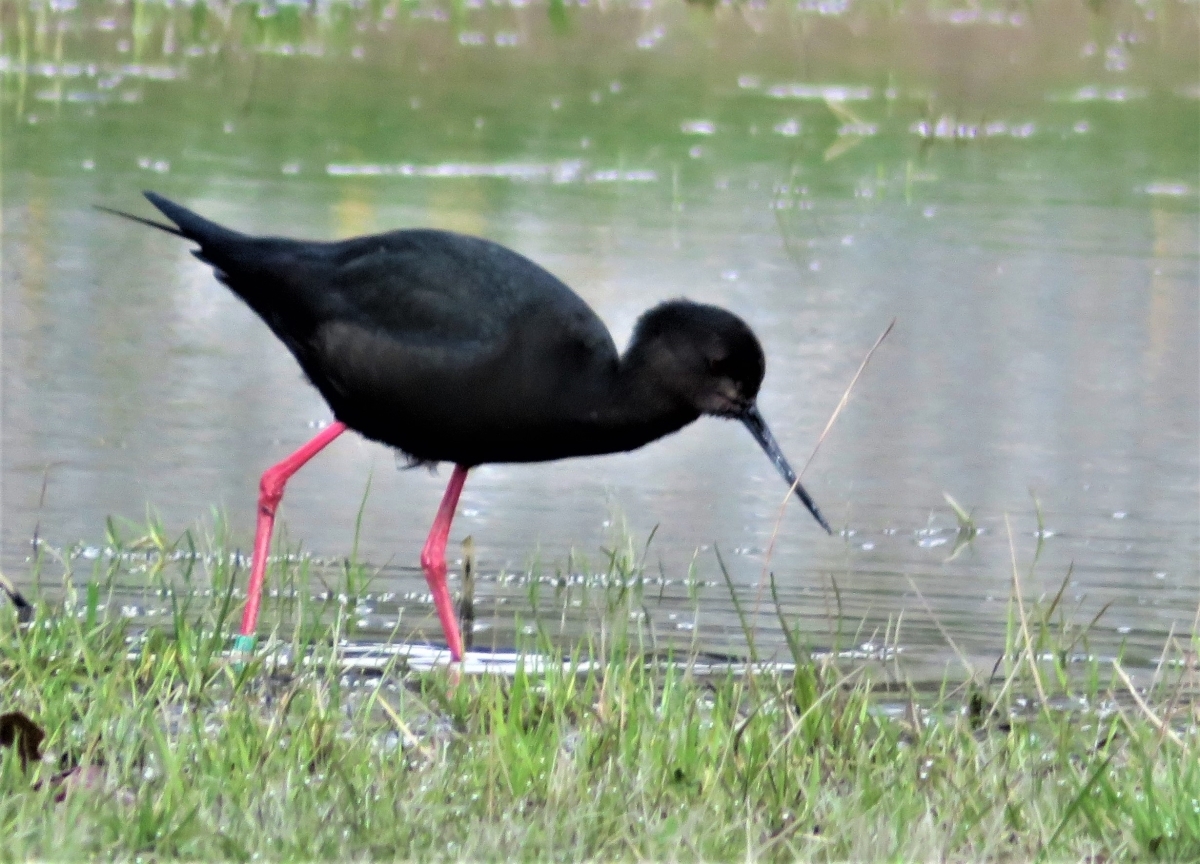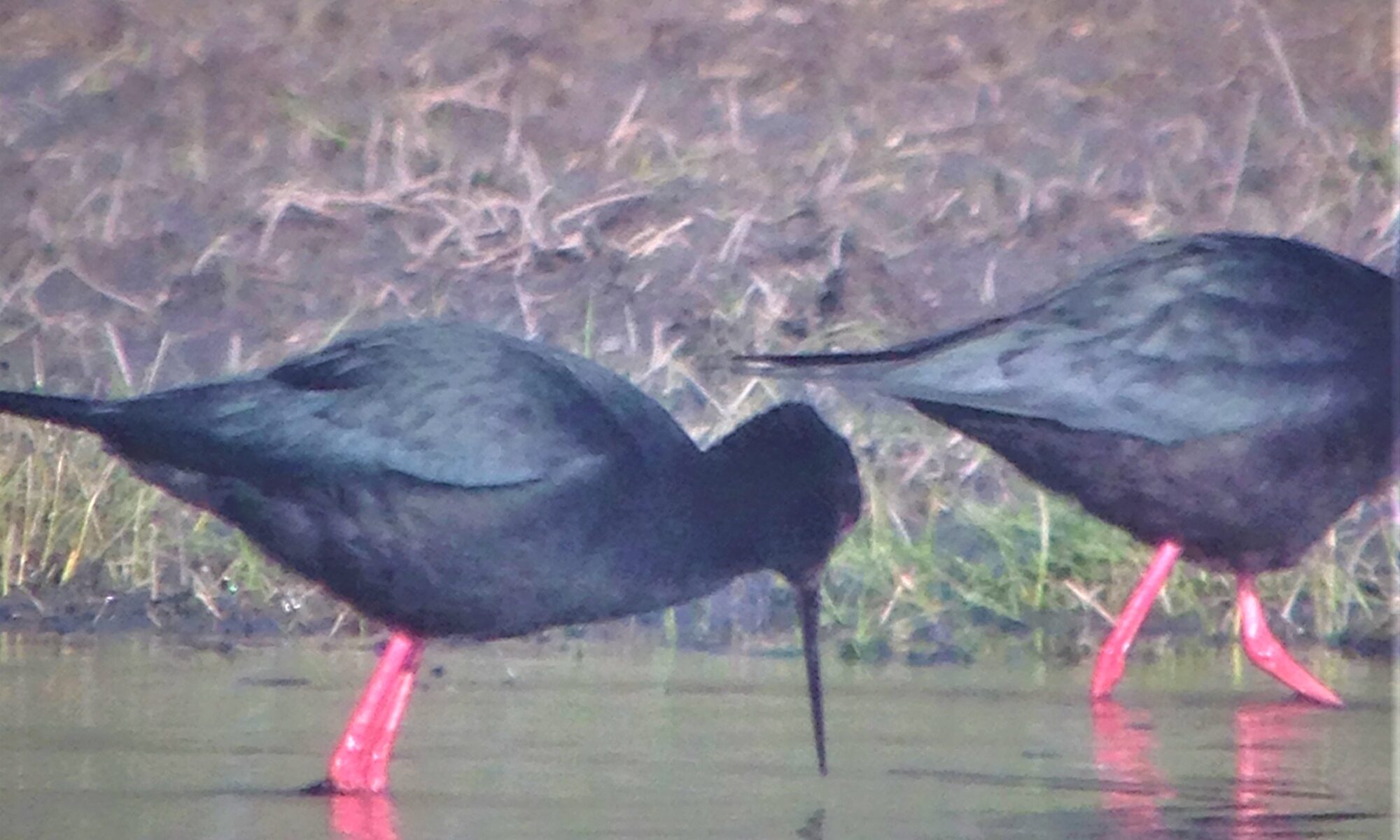A monumental moment, when a pair of the world’s rarest wader’s turns up unexpectidly at Makarora (North Otago) at the start of the bird breeding season and then… realisation that you were at the captive release of one of them five years ago. The Kakī/black stilt (Himantopus novaezelandiae) is a critically endangered endemic wading bird considered important taonga (a living treasure) by Māori. The kaki is thought to be monogamous and birds often pair for life.

Leg colour band records have shown that both birds were hatched in the Department of Conservation captive breeding facility at Twizel and later released on the Tasman. Since then, they were first seen together on 9 Sept 2019 on the Tasman, in 2020 and also on 25 Feb 2021. Neither one has bred yet and now they are present at Makarora!
BkRBk/GW hatched on 26 Nov 2015 (5y old), released on the Tasman as a sub-adult (below bottom right at original release site) Aug 2016.

GBkO/BkW hatched on 14 Nov 2017 (3y old), released on the Tasman as a juvenile in Jan 2018.
The presence of this species along with reguarly recorded wrybill, black-billed gull, banded dotterel, South Island pied-oystercatcher, pied stilt and black-fronted tern now completes the migratory braided river avifauna composition for Makarora.
Kakī have been intensley managed since 1981 when the population declined to a low of just 23 birds. The Department of Conservations Captive Breeding Centre in Twizel plays an essential role in the Kaki recovery programme. Conservation efforts to date have succeeded in averting extinction and increasing Kaki numbers. The current population of adult birds is now around 170 (per coms Aug 2021 DOC Twizel).
The main threats to kakī include: introduced invasive mammalian predators, habitat loss and human disturbance. Kakī are found within braided river habitat, associated pools and wetlands.

Historically they were present throughout the braided rivers of the South Island, however today their spatial distribution is concentrated around the current release sites of the Tasman and the Godley Rivers with records of dispersal on the east coast near Christchurch, the top of the South Island and the south coast near Riverton. Within the Southern Lakes region the only other record (2020) is of a single kakī from the delta of the Matukituki River at the base of Lake Wanaka but this is the first time kakī have been recorded at the north of Lake Wanaka in Makarora since 1983 (when a pair was last confirmed nesting). Could this be a promising sign that this important taonga is ready to thrive beyound its original release sites..?

The kakī pair have been included within ABT’s braided river bird monitoring observations and reporting and certainly adds further validity to current ABT and other invasive predator control operations within the catchment. We hope they stay for the season and maybe even attempt to breed here!

Kaki primarily like to feed on insect larvae often in the subtrate of wetland habitats, molluscs, crustaceans and worms. They often feed by scything for worms and midge larvae in soft substrates and can be found sharing with the more common poaka/ pied stilt.
Thanks to Twizel DOC staff; Cody Thyne and Claudia Mischler following our colour band reporting for historical data on this excitng rare bird record.
“This sighting is super exciting for us. I can’t thank you enough for letting us know. I’d be interested to see what they end up doing – will they stay, will they move and be found elsewhere, will they breed? So if you happen to keep seeing them, please do let me know!”

Author and kaki observer: Rachel Hufton, image Rachel with Cody Thyne (Doc Twizel) at the original Kaki release site of BkRBk/GW, Tasman delta August 2016.
Reference
https://nzbirdsonline.org.nz/species/black-stilt
NZ Archives – Reserves – Wildlife – Wildlife Management – Makarora




